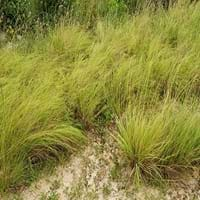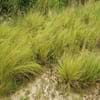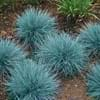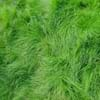Life Span
Perennial
Perennial
Type
Grass
Bulb or Corm or Tuber
Origin
Eastern Africa, Southern Africa
South America, Argentina
Types
Robusta blue, Robusta green, Curvula
Not Available
Number of Varieties
Not Available
Habitat
Cultivated Beds
Temperate Regions
USDA Hardiness Zone
7-13
5-9
AHS Heat Zone
12 - 10
9-1
Sunset Zone
4, 5, 6, 7, 8, 9, 10, 11, 12, 13, 14, 15, 16, 17, 18, 19, 20, 21, 22, 23, 24
21,22
Habit
Clump-Forming
Clump-Forming
Flower Color
Gray, Lavender
Light Blue, Light Purple, Silver, Sky Blue
Flower Color Modifier
Bicolor
Bicolor
Fruit Color
Gray Green, Silver
Not Available
Leaf Color in Spring
Green, Dark Green
Green, Light Green, Gray Green
Leaf Color in Summer
Light Green
Light Green
Leaf Color in Fall
Dark Green, Bronze
Several shades of Green
Leaf Color in Winter
Yellow, Dark Green, Bronze
Light Green
Leaf Shape
Grass like
Grass like
Plant Season
Summer, Fall, Winter
Spring
Sunlight
Full Sun
Full Sun, Partial Sun, Partial shade
Type of Soil
Loam, Sand
Clay, Loam, Sand
The pH of Soil
Acidic, Neutral, Alkaline
Acidic, Neutral, Alkaline
Soil Drainage
Well drained
Well drained
Bloom Time
Late Summer, Early Fall
Early Spring, Spring, Late Winter
Tolerances
Drought
Drought
Where to Plant?
Ground
Container, Ground
How to Plant?
Seedlings
By dividing rhizomes, tubers
Plant Maintenance
Medium
Medium
Watering Requirements
Average Water Needs
Average Water Needs, Do Not over Water, Requires regular watering
In Summer
Lots of watering
Lots of watering
In Spring
Moderate
Moderate
In Winter
Average Water
Average Water
Soil pH
Acidic, Neutral, Alkaline
Acidic, Neutral, Alkaline
Soil Type
Loam, Sand
Clay, Loam, Sand
Soil Drainage Capacity
Well drained
Well drained
Sun Exposure
Full Sun
Full Sun, Partial Sun, Partial shade
Pruning
Cut back old stems to the ground
Remove damaged leaves, Remove dead branches, Remove dead leaves
Fertilizers
Requires high amount of nitrogen
All-Purpose Liquid Fertilizer
Pests and Diseases
No serious insect or disease problems
Slugs, Snails
Plant Tolerance
Drought
Drought
Flower Petal Number
Single
Single
Foliage Texture
Fine
Medium
Foliage Sheen
Matte
Matte
Attracts
Not Available
Bees, Birds, Hummingbirds
Allergy
conjunctivitis, Pollen
Not Available
Aesthetic Uses
Borders, Showy Purposes
Showy Purposes
Beauty Benefits
Not Available
Not Available
Environmental Uses
Erosion control
Air purification
Medicinal Uses
No Medicinal Use
No Medicinal Use
Part of Plant Used
Leaves, Seeds
Flowers
Other Uses
Used as a grain, Used to make baskets, brooms, hats
Not Available
Used As Indoor Plant
No
Yes
Used As Outdoor Plant
Yes
Yes
Garden Design
Bedding Plant, Container, Edging, Groundcover, Mixed Border, Rock Garden / Wall
Container, Lawns and Turf, Mixed Border, Rock Garden / Wall, Wildflower
Botanical Name
ERAGROSTIS curvula
Ipheion uniflorum
Common Name
Weeping Lovegrass
Spring Starflower, Springstar
In Hindi
Weeping Lovegrass
Spring Starflower
In German
Weinend lovegrass
Frühling Borretsch
In French
Weeping lovegrass
Spring Starflower
In Spanish
Pasto llorón
primavera Flor de estrella
In Greek
κλάμα Lovegrass
άνοιξη starflower
In Portuguese
chorando lovegrass
primavera Starflower
In Polish
Płacząca Lovegrass
Wiosna Starflower
In Latin
Plorans Lovegrass
Spring Starflower
Phylum
Magnoliophyta
Magnoliophyta
Class
Liliopsida
Lilopsida
Order
Cyperales
Asparagales
Clade
Angiosperms, Commelinids, Monocots
Angiosperms, Monocots
Tribe
Eragrostideae
Gilliesieae
Subfamily
Chloridoideae
Allioideae
Number of Species
Not Available
Not Available
Importance of Weeping Lovegrass and Spring Starflower
Want to have the most appropriate plant for your garden? You might want to know the importance of Weeping Lovegrass and Spring Starflower. Basically, these two plants vary in many aspects. Compare Weeping Lovegrass and Spring Starflower as they differ in many characteristics such as their life, care, benefits, facts, etc. Every gardener must at least have the slightest clue about the plants he wants to plant in his garden. Compare their benefits, which differ in many ways like facts and uses. The medicinal use of Weeping Lovegrass is No Medicinal Use whereas of Spring Starflower is No Medicinal Use. Weeping Lovegrass has beauty benefits as follows: Not Available while Spring Starflower has beauty benefits as follows: Not Available.
Compare Facts of Weeping Lovegrass vs Spring Starflower
How to choose the best garden plant for your garden depending upon its facts? Here garden plant comparison will help you to solve this query. Compare the facts of Weeping Lovegrass vs Spring Starflower and know which one to choose. As garden plants have benefits and other uses, allergy is also a major drawback of plants for some people. Allergic reactions of Weeping Lovegrass are conjunctivitis and Pollen whereas of Spring Starflower have Not Available respectively. Having a fruit bearing plant in your garden can be a plus point of your garden. Weeping Lovegrass has no showy fruits and Spring Starflower has no showy fruits. Also Weeping Lovegrass is not flowering and Spring Starflower is not flowering . You can compare Weeping Lovegrass and Spring Starflower facts and facts of other plants too.





